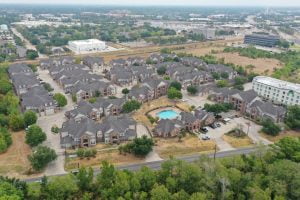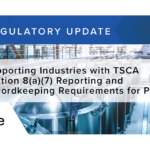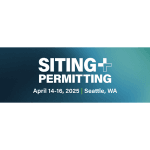
Transportation and Environmental (T&E) surveys play a crucial role in urban development and environmental conservation in cities like Austin, Texas. By understanding the significance of these surveys, the process of conducting them, the challenges faced, and future trends, it becomes evident that T&E surveys have a lasting impact on the community. This article will delve into the various aspects of T&E surveys in Austin and shed light on their significance and influence.
Understanding the Importance of T&E Survey
Before delving into the details, it is essential to grasp the importance of T&E surveys in urban development. These surveys provide critical insights into the transportation and environmental aspects of a city, allowing for informed decision-making, planning, and development. T&E surveys help assess the impacts of transportation systems on the environment, analyze traffic patterns, and identify areas for improvement. By understanding the interconnectedness of transportation and the environment, cities can strive for sustainable growth.
The Role of T&E Survey in Urban Development
In the realm of urban development, T&E surveys serve as a fundamental tool for city planners and policymakers. They provide valuable data on transportation modes, usage patterns, and demographics, enabling the design of efficient transportation networks. T&E surveys also aid in identifying potential bottlenecks, such as congested roadways or underutilized public transportation, and help prioritize infrastructure projects to alleviate these issues. By integrating T&E surveys into urban development plans, Austin can strive for a more livable and sustainable city.
How T&E Surveys Contribute to Environmental Conservation
Environmental conservation is another significant aspect influenced by T&E surveys. These surveys help monitor the impact of transportation systems on air quality, noise pollution, and natural habitats. By studying the correlation between transportation patterns and environmental degradation, city officials can implement measures to reduce pollution levels and preserve local ecosystems. Additionally, T&E surveys play a crucial role in identifying opportunities for enhancing sustainable transportation alternatives, such as promoting cycling infrastructure or expanding public transit options.
Furthermore, T&E surveys enable city planners to evaluate the effectiveness of existing environmental policies and initiatives. By collecting data on transportation-related emissions and their impact on air quality, policymakers can make informed decisions on implementing stricter emission standards or promoting the adoption of electric vehicles. These surveys also help in understanding the noise pollution levels in different areas of the city, allowing for the implementation of noise reduction measures like sound barriers or traffic management strategies.
Moreover, T&E surveys provide valuable insights into the impact of transportation on natural habitats and biodiversity. By mapping out areas with high ecological value and analyzing transportation routes that intersect with these habitats, city officials can take proactive measures to protect and preserve these sensitive areas. This could involve creating wildlife corridors, implementing speed limits in critical wildlife zones, or even rerouting transportation infrastructure to minimize disruption to natural habitats.
The Process of Conducting a T&E Survey in Austin
Conducting a T&E survey in Austin involves several essential steps, each contributing to the accuracy and reliability of the collected data.
Pre-Survey Planning and Preparation
Prior to conducting the T&E survey, thorough planning and preparation are necessary. This includes defining the survey objectives, selecting appropriate methodologies, and identifying the target population. Stakeholder engagement is crucial during this phase to ensure all relevant perspectives are considered.
Fieldwork and Data Collection
The fieldwork stage of a T&E survey involves collecting data from various sources, including interviews, surveys, and traffic counts. Trained surveyors gather information on transportation behavior, travel patterns, and environmental indicators. Advanced technologies like GPS trackers and remote sensing tools aid in data collection, ensuring accuracy and efficiency.
Analysis and Interpretation of Survey Results
Once the data is collected, the next step involves analyzing and interpreting the survey results. Statistical techniques are employed to derive meaningful insights and draw evidence-based conclusions. This stage requires expertise in data analysis and the ability to identify trends, patterns, and correlations that contribute to decision-making in urban planning and development.
Challenges in Conducting T&E Surveys in Austin
While T&E surveys yield valuable information, they are not without challenges. In the context of Austin, two significant challenges arise: geographical and climatic factors, and legal and regulatory hurdles.
Dealing with Geographical and Climatic Challenges
Austin’s diverse topography and varying climate present unique challenges in conducting T&E surveys. The city’s hilly terrain and unpredictable weather patterns can impact data collection efforts, making it essential to adopt robust survey methodologies that account for these factors. The use of technology, such as remote sensing and mobile data collection, can mitigate some challenges associated with Austin’s geography and climate.
Navigating Legal and Regulatory Hurdles
Carrying out T&E surveys in Austin requires adherence to legal and regulatory frameworks. These frameworks ensure ethical practices and protect the rights and privacy of survey participants. Compliance with data protection laws and obtaining appropriate permits and permissions are vital aspects of conducting T&E surveys in Austin.
Future Trends in T&E Surveys in Austin
Technological advancements and policy changes are reshaping the landscape of T&E surveys in Austin, paving the way for more accurate data collection and informed decision-making.
Technological Innovations in T&E Surveys
In recent years, technological innovations have revolutionized T&E surveys. Advancements such as mobile apps for data collection, remote sensing technologies, and data visualization tools significantly enhance the efficiency and accuracy of surveys. These innovations enable real-time data collection, analysis, and visualization, providing valuable insights for policymakers and practitioners.
Policy Changes Impacting T&E Surveys
The dynamic nature of policy frameworks affects the direction of T&E surveys. Evolving policies aimed at promoting sustainable transportation, reducing carbon emissions, and enhancing urban livability shape the priorities and focus of T&E surveys. Keeping abreast of policy changes allows researchers and practitioners to align their survey methodologies with the latest objectives and guidelines.
The Impact of T&E Surveys on Austin’s Community
Beyond their technical aspects, T&E surveys have a tangible impact on Austin’s community.
T&E Surveys and Community Development
T&E surveys empower communities by giving them a voice in transportation and environmental decision-making processes. By actively involving residents in surveys, city officials can gather valuable insights, address community concerns, and foster a sense of ownership in urban development initiatives. This participatory approach strengthens community bonds and ensures that development activities align with the needs and aspirations of Austin’s residents.
Public Perception and Participation in T&E Surveys
Public perception plays a key role in the success of T&E surveys. Effective communication and transparency throughout the survey process are essential to maintain public trust and encourage participation. Empowering residents to understand the purpose and benefits of T&E surveys fosters a supportive community environment and paves the way for more comprehensive and impactful surveys in the future.
In conclusion, T&E surveys in Austin, Texas, have a significant influence on urban development and environmental conservation. By understanding their importance, the process of conducting them, and the current challenges and future trends, it becomes evident that T&E surveys hold immense potential to shape Austin’s future as a sustainable and thriving city.
As Austin continues to grow and evolve, the need for comprehensive T&E surveys becomes increasingly critical for sustainable urban development and environmental conservation. If you’re seeking expert guidance to navigate these complex challenges, look no further than ESE Partners. Our team of environmental engineers and scientists specializes in assessment, remediation, compliance, and a host of other services designed to responsibly move your business forward. With the USACE changing their review process for DA permit applications in the Galveston County District, now is the time to ensure you have the right environmental consultant on your side. Request A Proposal today and let ESE Partners provide you with the innovative solutions and quality-driven results your projects demand.








